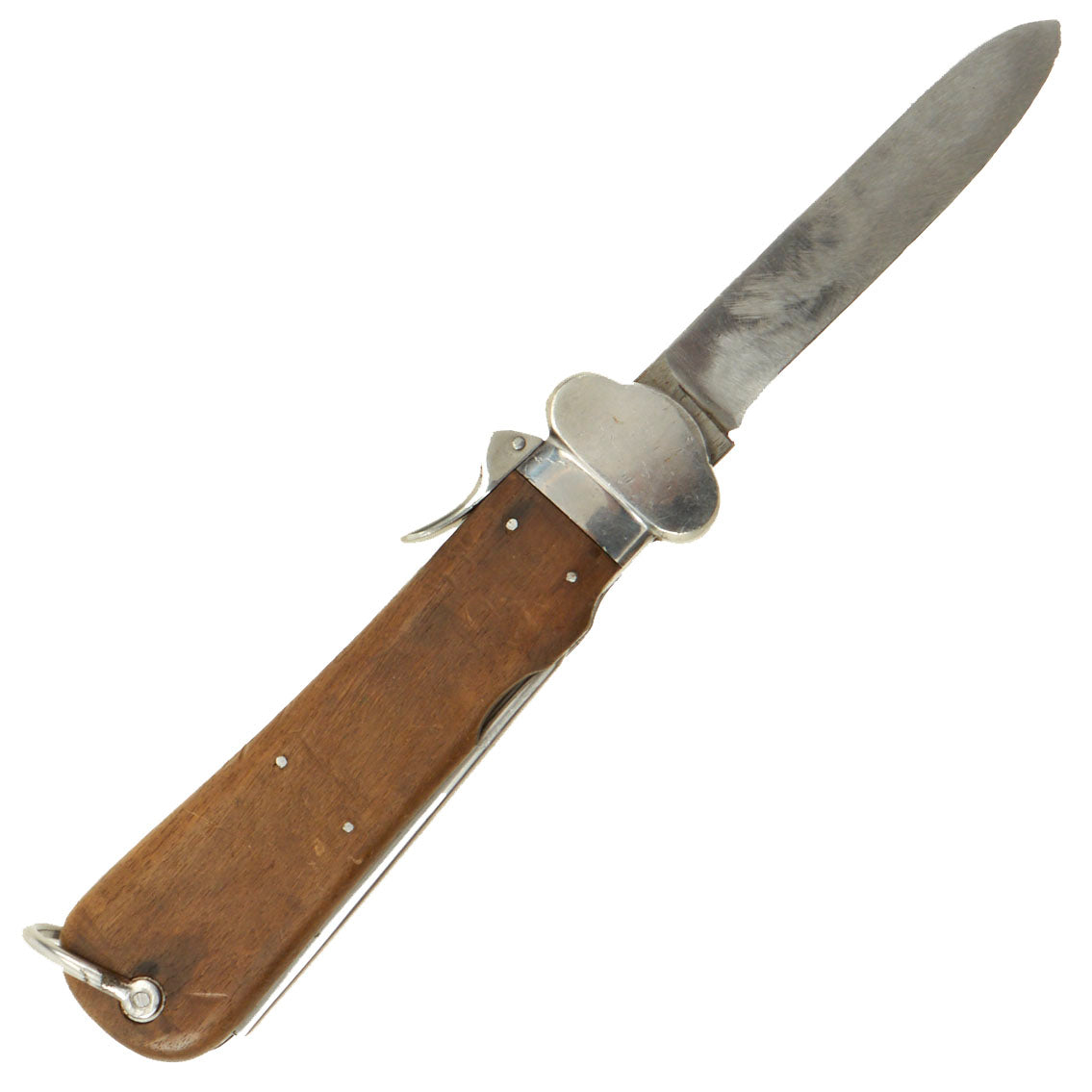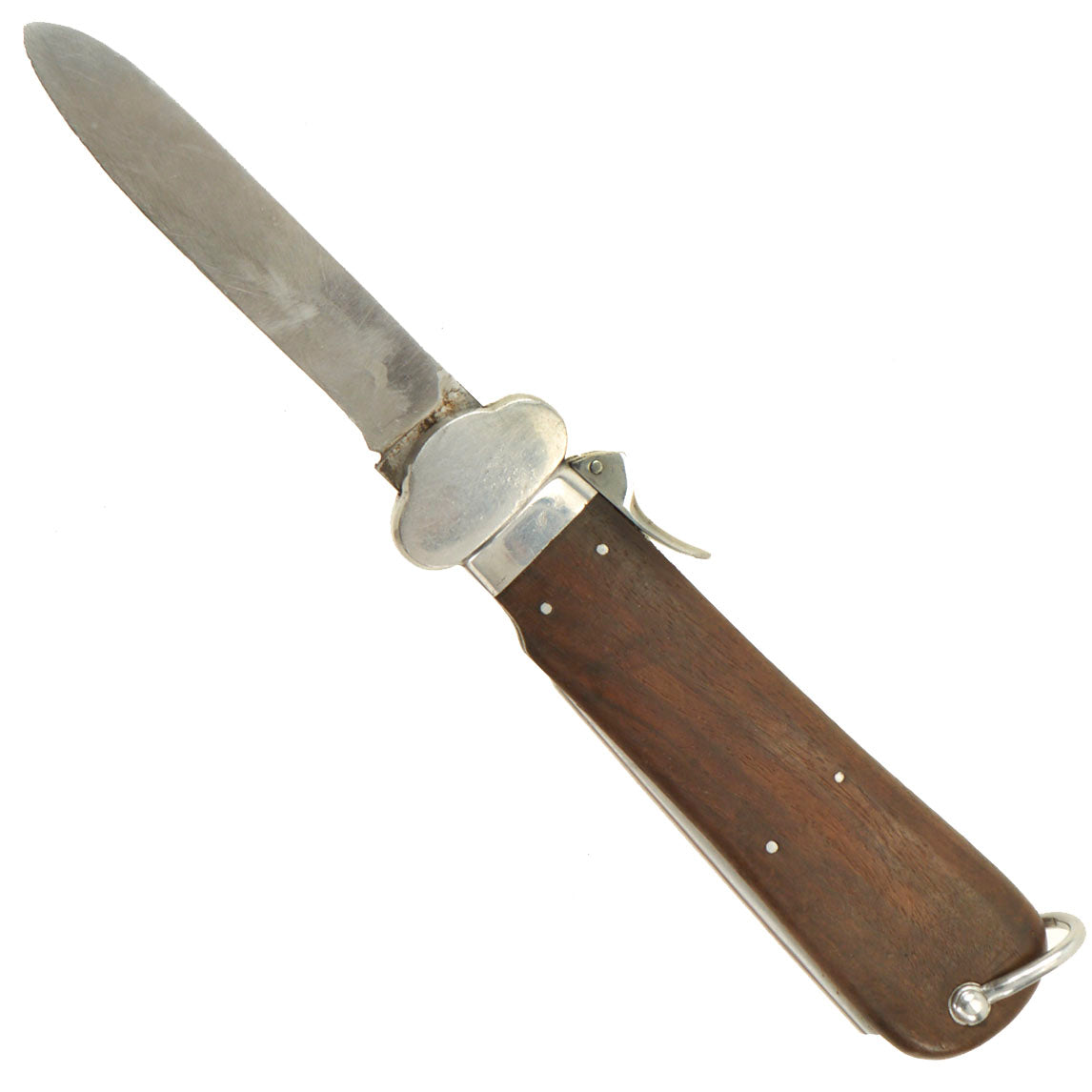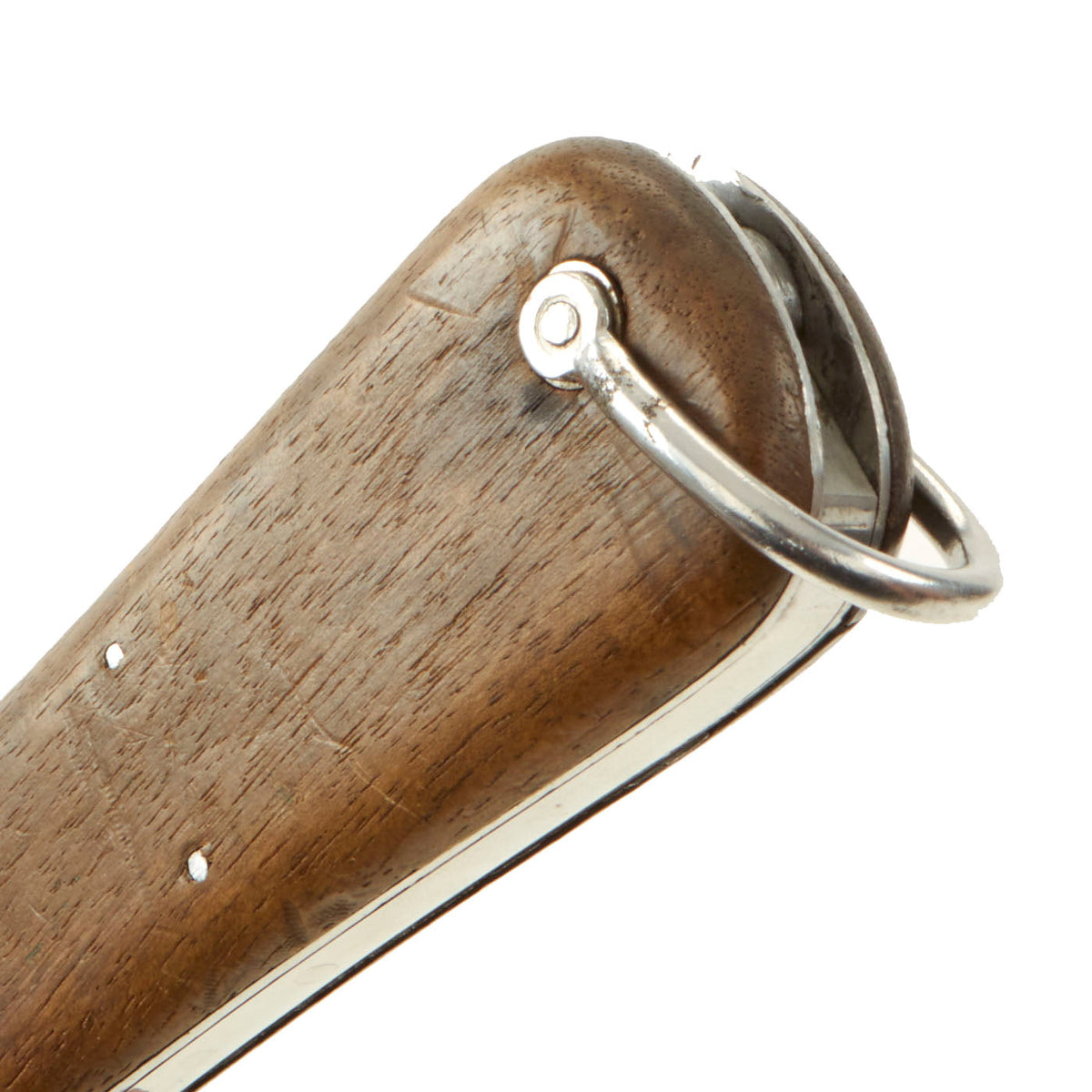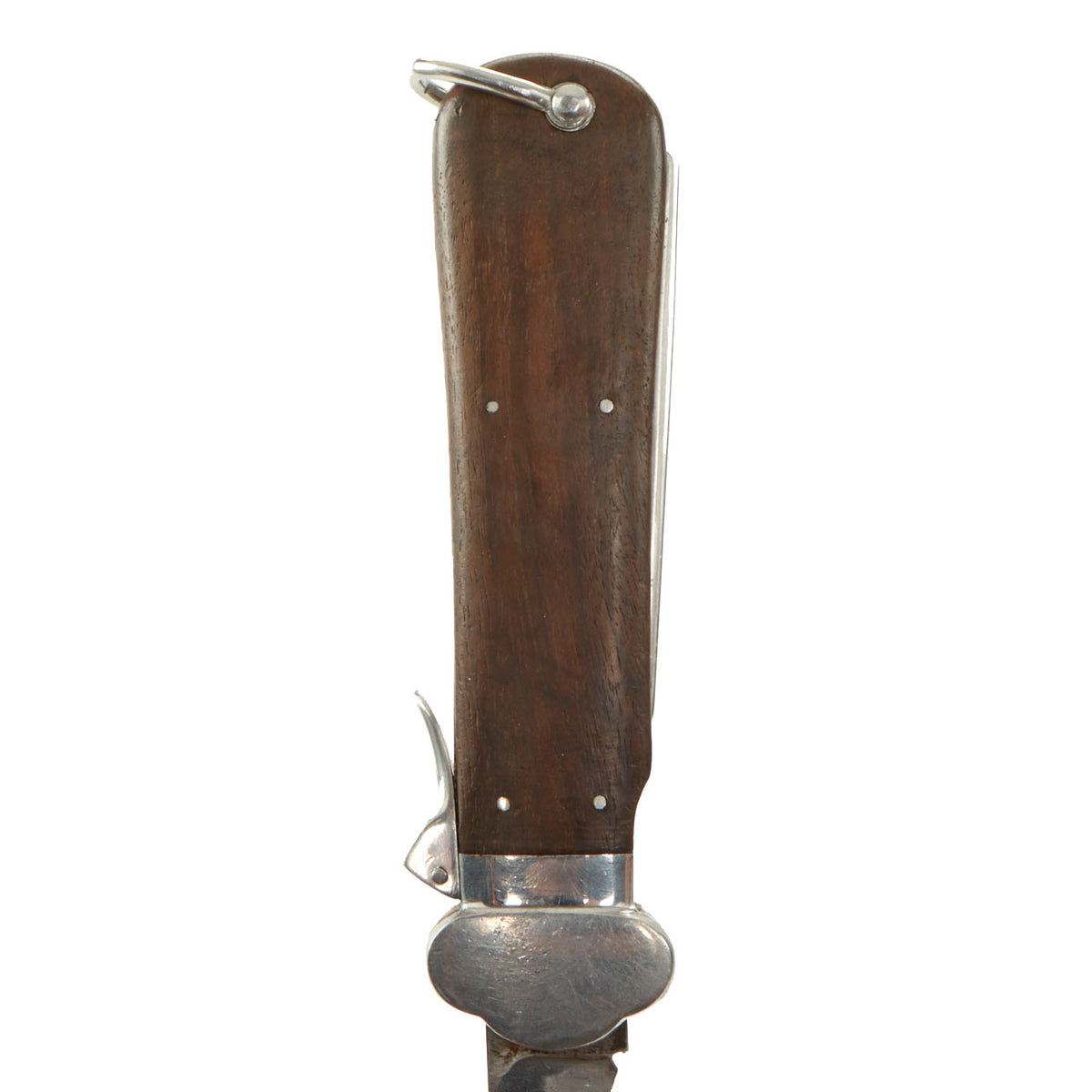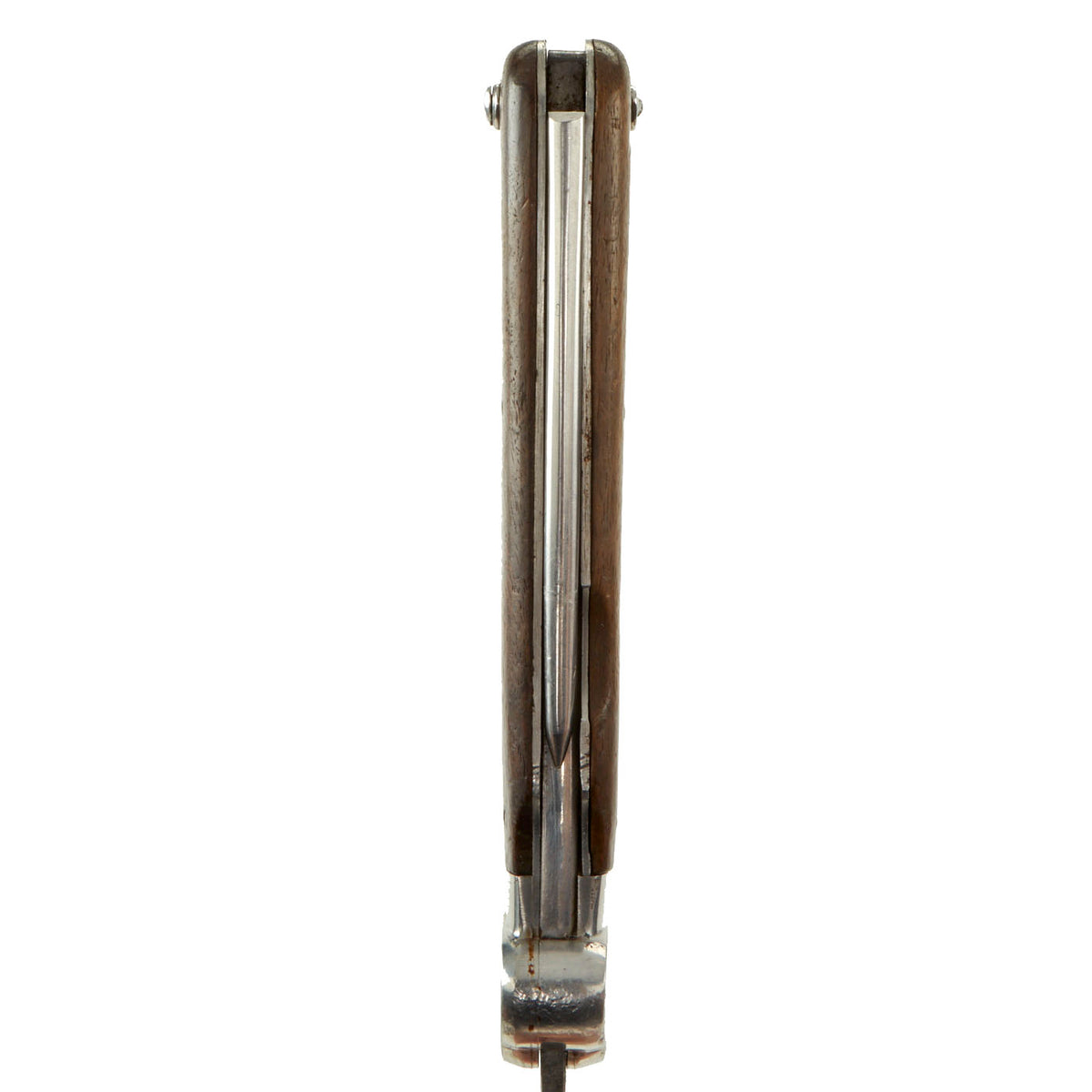Original German WWII Early Luftwaffe Fallschirmjäger Gravity Knife Paul Weyersberg with Waffen Proof Original Items
$ 725,00 $ 217,50
Original Item: Only One Available. This is a very nice example of an early war production legendary Luftwaffe Fallschirmjäger-Messer, or German air force paratrooper knife (FJM or FKm), It was produced by PAUL WEYERSBERG & Co. of SOLINGEN, who were one of the major producers of this knife during WWII. The company’s “Sword-and-Wreath” trademark logo is etched into the blade, but is only partially visible. Solingen is known as the “City of Blades” and has a centuries-old history of edged weapon production.
These knives utilize a four-inch (100 mm) telescoping (OTF), gravity-propelled locking blade. First produced in 1937, the FJM was issued to German flight crews and paratroops, primarily for the purpose of cutting a trapped parachutist from his rigging in case he landed with a tangled parachute, or became entangled in trees with the shroud lines. Though not intended for use as a fighting knife, the FJM’s blade could be and was used as a close combat weapon when necessary.
The Luftwaffe Fallschirmjäger-Messer uses a sliding blade inside a metal grip frame, which was originally fitted with smooth wood scales, usually of beech or walnut. The blade itself is a relatively blunt spear-point, and the profile is flat ground, tapering to a utility edge. To open the blade, the user points the FJM downwards while flipping up the fulcrum-style operating lever, allowing gravity to draw out the blade to its fullest extent. Releasing the lever locks the blade into position. The FJM may also be opened by flipping the blade release lever while flicking the wrist holding the knife, causing the blade to extend. The FJM was also equipped with a folding marlinspike or awl. Primarily intended for untangling rope knots, it can also be used as a prying tool. The FJM’s spike does not lock when opened and was never intended to be used as a combat weapon, though individual German paratroopers may have employed it as such.
There are three principal types of wartime-era Luftwaffe Fallschirmjäger-Messers. The Type I FKm has wood scales (handle), was made from 1937-1941, and unlike successive models, has no ‘takedown’ capability. The Type II FKm is the same knife, but with takedown features, and was produced from 1941 to the end of World War II.
This example of the Type I FKm (FJM) is in very nice service worn condition, and it has a fine carbon steel blade, with anodized and plated steel components making up the rest of the knife. The blade does have some minor staining now, and the black anodized coating is completely worn in many places on the knife. There is a number 5 and also a Waffen Eagle on the base of the marlin spike. This is the standard Luftwaffe inspection stamp style used throughout the war.
The number 466 is stamped on the bottom of the cross guard, the blade base, and on the end of the blade channel. The catch and spring are both marked with number 466. These are assembly numbers so that the various components can be matched, and the catches always have a different matching number.
This is a fully functional example, and the blade of this knife is in very good condition. It has however been sharpened and used, which has made the blade quite thin, and removed part of the maker mark. These were not really intended for long term use as an edged weapon, and were mainly used to help deal with cutting parachute lines.
The grip plates are of walnut with the standard four retaining rivets on each side. These plates are in very good condition, with a lovely color and only light wear.
Gravity knives in any condition are becoming harder to find in recent years. Ready to display!
Specifications:
Blade Length: 4″
Blade Style: Single Edged Knife
Overall length: 10 5/8“
Crossguard: 1 1/2
Fast Shipping with Professional Packaging
Thanks to our longstanding association with UPS FedEx DHL, and other major international carriers, we are able to provide a range of shipping options. Our warehouse staff is expertly trained and will wrap your products according to our exact and precise specifications. Prior to shipping, your goods will be thoroughly examined and securely secured. We ship to thousands clients each day across multiple countries. This shows how we're dedicated to be the largest retailer on the internet. Warehouses and distribution centres can be located throughout Europe as well as the USA.
Note: Orders with more than one item will be assigned a processing date depending on the item.
Before shipping before shipping, we'll conduct a thorough inspection of the items you have ordered. Today, the majority of orders will be delivered within 48 hours. The delivery time will be between 3-7 days.
Returns
The stock is dynamic and we cannot completely manage it because multiple stakeholders are involved, including our factory and warehouse. So the actual stock may alter at any time. It's possible that you may not receive your order once the order has been made.
Our policy is valid for a period of 30 days. If you don't receive the product within 30 days, we are not able to issue a refund or an exchange.
You can only return an item if it is unused and in the same state as the day you received it. You must have the item in its original packaging.
Related products
Uncategorized
Uncategorized
Uncategorized
Uncategorized
Uncategorized
Uncategorized
Uncategorized
Uncategorized
Uncategorized
Uncategorized
Uncategorized
Uncategorized
Uncategorized
Uncategorized
Uncategorized
Uncategorized
Armored Burgonet Helmet & Polearm from Scottish Castle Leith Hall Circa 1700 Original Items
Uncategorized
